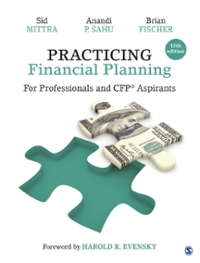Question
Module 5 Characteristics of job-costing and process costing Instructor's Note : The primary difference between job-costing and process-costing systems is the extent of averaging used
| Module 5 Characteristics of job-costing and process costing
Instructor's Note: The primary difference between job-costing and process-costing systems is the extent of averaging used under each method. Process systems use broad averaging to determine unit costs. Address the weighted-average method andFIFOmethod as additional process costing methods during the discussion. The difference between these two methods is thatFIFOseparates current period production costs from production costs that are part of beginningWIP. Compare and contrast job costing and process costing systems. What are the main differences between the two methods?
Module 5 Identify the Differences between Process Costing Methods.
Instructor's Note: There are two process-costing methods used to determine inventory cost. Determining which method to use largely depends on price fluctuation and level of inventory produced. The first-in-first-out (FIFO) process-costing method provides information about changes in costs from one period to the next. This enables managers to adjust selling prices based on current conditions and results in the most accurate unit prices. The weighted-average costing method is much simpler to use and accurately reflects the average unit costs during periods of fluctuating prices. The major difference between the two process costing methods is how equivalent units of production are computed. The weighted-average method calculates cost per equivalent unit of all work done to date regardless of when work was performed. Weighted-average costs are assigned to finished goods and work-in-process inventory. FIFO assigns the costs of previous accounting periods' equivalent units in beginning work in process to the first units completed and transferred out. Costs are assigned to equivalent units worked on during the current period from first to finish then the remaining units (similar to FIFO inventory valuation). Compare and contrast the weighted-average process-costing method and the FIFO process-costing method. In your opinion, which method is better and why?
|
Step by Step Solution
There are 3 Steps involved in it
Step: 1

Get Instant Access to Expert-Tailored Solutions
See step-by-step solutions with expert insights and AI powered tools for academic success
Step: 2

Step: 3

Ace Your Homework with AI
Get the answers you need in no time with our AI-driven, step-by-step assistance
Get Started


